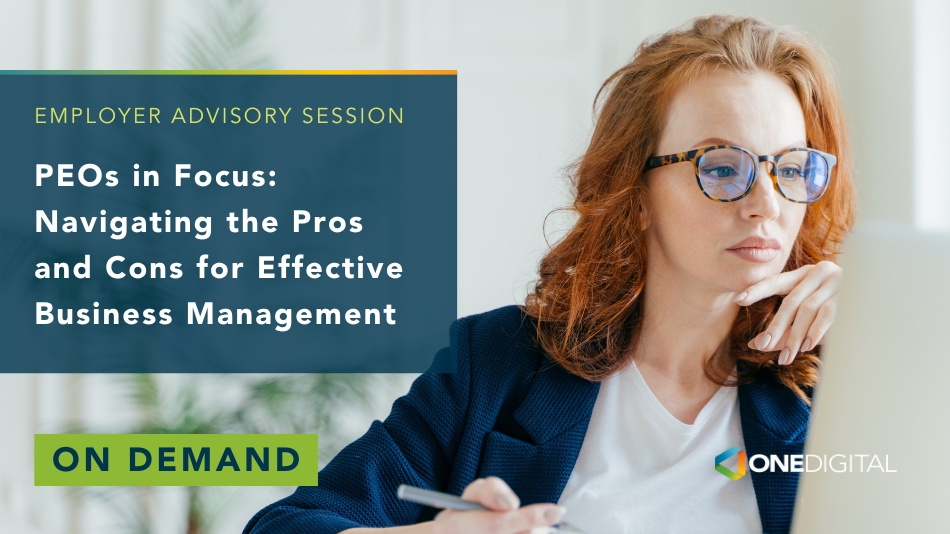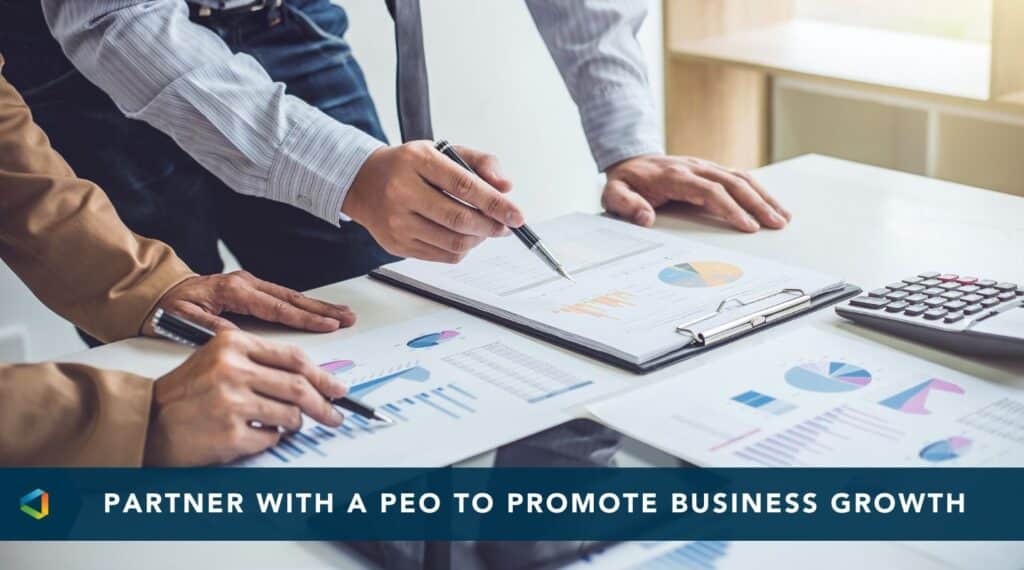Better Benefits
How to Know If It's Time to Leave Your PEO: When to Hold and When to Fold
How to Know If It's Time to Leave Your PEO: When to Hold and When to Fold
The benefits of a professional employer organization (PEO) are obvious: by consolidating insurance purchasing for multiple employer groups into one plan, PEOs can offer price advantages due to a "bulk" discount or funding arrangement.
These arrangements help with a range of human capital challenges; payroll technology, human resources, 401k contributions, health and benefits, workers compensation, State Unemployment Tax Authority (SUTA), Federal Unemployment Tax Act (FUTA), state employer tax and liabilities.
PEO arrangements sound like a win-win… what's the catch?
Business owners today face monumental challenges. From navigating a completely new world of work and staying on top of continuous regulatory changes to offering competitive benefits – all while working overtime to grow their business. That’s why for many employers, the promise of a PEO initially looks like a lifesaver. Outsourcing seems like an obvious solution to managing the increasingly complex human capital responsibilities.
The reality? Today’s landscape has vastly evolved over the last ten – even five years. Advancements in technology and increased competition have driven significant innovations in this space allowing businesses the freedom to choose the tools, solutions and partners that align with each unique needs and value. And unfortunately, many leaders don’t recognize the hidden implications of entering a PEO until it’s too late.
Pricing
Early on, the benefit cost savings seem straightforward enough; however, this initial overview can be misleading with the intent to secure an initial sales meeting. Many PEOs charge a percentage of payroll and the contracts may not include additional costs for adjunct services, technology upgrades and additional required liability coverage. The employer ends up paying more on the percentage-based rather than the fee-based model they were initially shown, especially if there were bonuses, hires or any other indications of economic growth.
Choice
Once inside of a PEO, employers no longer have the ability to design customized plans or offerings that reflect the needs of the team and company culture. The benefits that are meant to provide savings are reserved for the PEO carrier partner. Coupled with the outdated HR administration, payroll and benefits software that many PEOs rely on, the additional costs add up and vastly outweigh the benefits. The invoices are convoluted and lack transparency, making it nearly impossible to break costs out as an itemized invoice as many of the fees are lumped together.
Autonomy
Co-employment arrangements mean that employers no longer have full control of human capital. Often, it’s too late by the time employers realize they are contractually beholden to a PEOs sweeping employee disciplinary actions. These rules may or may not align with company culture and values, but they must be upheld with little to no exception.
Experience
Notifications about benefits changes, employee W2s and other updates come from the PEO, not the business resulting in a disjointed and impersonal experience. Employees are directed to contact an 800 number for any questions, concerns with their offerings.
When the Return is Not Worth the Investment
If a business owner discovers they no longer want to participate in the PEO arrangement, exiting the PEO can be extraordinarily difficult and may include significant financial risk due to clawbacks built into the contract.
One of the major reasons businesses continue using a PEO long after it’s no longer worthwhile is the very real challenge of suddenly having to manage many vendor partners to avoid a sudden breakdown in the communication, accessibility and organization for employees.
Here’s where having a partner well-versed in the art of the exit strategy is essential. Having someone on your side who is familiar with the pitfalls of exiting a PEO can be the difference between a headache-inducing mess and an effortless cost-saving experience.
Once you’ve decided to leave, OneDigital can help vet potential human resource management systems (HRMS) and payroll technology partners, build a timeline around the transition plan and bring trusted partners to the table for other benefits and solution needs.
It’s typically broken out into six steps:
-
Conduct an Audit
OneDigital strategists work with your business to gather insights about the current processes and offerings to understand operating effectiveness, risk mitigation and provide a plan that aligns with the organizational culture.
-
Reevaluate Human Capital Management Payment System
By working closely with payroll technology to integrate the new system, OneDigital ensures employees experience the same processes they’ve grown accustomed to, eliminating any disruption or confusion for plan participants. The administrative burden for the employer is equal to or less than what it was inside of the PEO. Depending on each employer’s unique circumstances, the OneDigital team will provide a timeline and review exit clauses from the PEO, put together a plan and employ trusted partners to address any gaps in coverage with Worker’s Comp, ETMI, tax restarts and timing, including SUDA and FUTA to avoid potential issues in the future. If leaving midyear, we can ensure the termination of the benefits aligns with the start of the new benefits.
-
Get Real About HR Needs
Quite often, companies are paying to utilize bundled HR service at least 7-8 times a year. Assessing how often this service is used will allow employers to right-size this expense. By moving this support to a more fractional as-needed basis, employers can realize big cost savings and get the same level of compliance confidence. Whether scaling up or down, our team will integrate with other necessary functions such as payroll, benefits offerings and more.
-
Incorporate Competitive Customization
With no flexibility or freedom managing or selecting benefits inside of the PEO, it can be challenging to suddenly have to determine the right mix of offerings that will engage your unique workforce. Our team will help you get specific about what your group is looking for and values in their benefits package.
-
Revitalize the 401(k)
OneDigital’s Retirement and Wealth consultants provide an aggressive approach to building the return on investment for your 401(k) offering.
-
Gain Compliance Confidence
Receive the same level of support in addition to part-time or fractional HR support, granting access to sophisticated HR generalists and strategists. Lean on OneDigital to help with state and federal guidelines as well as legislative and regulatory developments as they happen.
Finding the right partner is a critical element when transitioning out of your current PEO arrangement. OneDigital’s strategists are employee benefits experts, savvy problem solvers and have the industry experience, national reach and bench strength to help employers navigate the complexities of exiting a PEO.
Take the first step toward a benefits strategy that empowers your workforce and aligns with your business by connecting with a OneDigital consultant today.
Looking to learn more about the pros and cons of a PEO? View the related blog post: What is a PEO? The Pros and Cons of a Professional Employer Organization.
These materials are provided for informational and educational purposes only and do not constitute a recommendation to buy, sell, or hold any security, nor do they constitute legal, accounting, investment or tax advice. Investment advice offered through OneDigital Investment Advisors, an SEC-registered investment adviser and wholly owned subsidiary of OneDigital.




